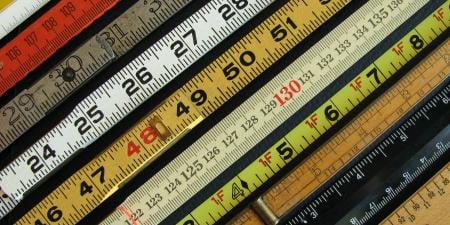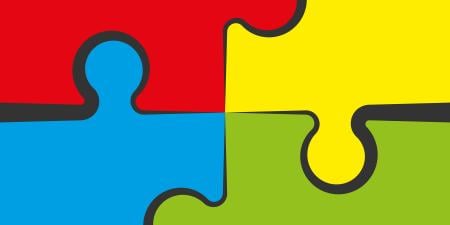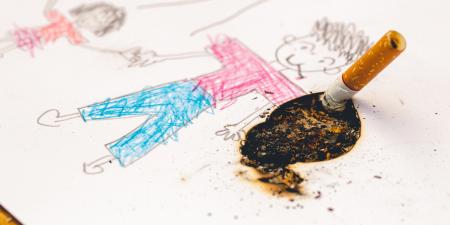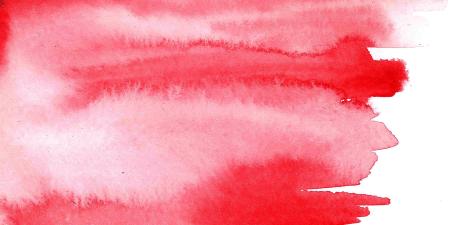Abstract
Channeling feelings into the written word rather than the scalpel was at the heart of the creative writing challenge that the first author (DR) accepted when she joined the Seven Doctors Project at the University of Nebraska Medical Center in 2008. Burnout has become recognized as a factor undermining physicians’ quality of life, and the practice of creative writing helps mitigate stress and sustain a successful practice. When physicians partner with and are mentored by a seasoned creative writer, creative writing can serve as an exercise in ethical reflection, which is particularly valuable at mid-career; this is the subject of the following dialogue between one physician writer and the facilitator of the Seven Doctors Project creative writing class.
In 2008, the second author (SL) convened a group of seven physicians and seven seasoned local writers to explore how creative writing processes might help mid-career physicians use the written word to further develop the creativity so key to caring ethically for patients. What follows is a conversation between SL and one of those first participants (DR).
DR: The reason I came to participate in your creative writing experiment in 2008 is a simple one for an academician: I received an email invitation from my department chair. How do you turn down your chair? Was it Russian volunteer style, because I didn’t already publish enough, because I was close to the participants’ average age of 52, or because everyone else in the department said no? Then there was my husband, a facilitator of emotional intelligence seminars, who suggested how beneficial for my career this course would be. Plus my burn team thought it was a hoot and carved out the time for me to attend. Finally, I met you and maybe had a soft spot for helping a PhD candidate with his thesis.
Creative writing and burn care? Facts, data, and sweaty surgeries were my all-encompassing life’s work. Why was I agreeing to participate in a creative writing class? The work for this thesis—the Seven Doctors Project of 2008—paired seven physicians with seven local (and successful) writers. Our goal was to facilitate translating our medical (in my case, surgical) creativity—and stress—into the written word. Not having written much except daily rounding notes, I went and found books on “how to write a poem” and plunked them down on the desk for our first working meeting. And, really, meeting at 5:30 p.m.—which is evening for the internists in the group but merely a lunch break for me—was a push. I always seemed to be running late and in the wrong room. But my seasoned writing partner, Rebecca, was a woman of incredible beauty with a free and kind spirit. She was calming and nurturing, and she published a book written in part with this group.1
SL: Debra, you hit on a universal among physicians. Because of how busy you are, you only make time when you really need to or really want to. In a way, in your case it sounds like there was a little of both: duty and curiosity. I am glad you found your way into the creative writing workshop. Some of the physician-participants, including Bud Shaw, your chair, were natural participants. At some stage in their education and their lives, they, like other physicians, wanted to be writers,2 but they took the road that led to medical training. But your primary interest is music, not writing. If we could, we would individualize the experience to music or sculpture or theatre in line with a person’s interests … but there are materials and multiple components that need to be put into play. Writing is portable and practical. In just a few minutes we can find ways to encourage physicians to start doing some writing. And, if we are determined enough, we can help lead them to draft an extended writing project. Thinking about the ethics of our work—which has a lot to do with helping physicians who are facing job dissatisfaction, compassion fatigue, burnout, and so on—how should we encourage other colleagues who need creative stimulation and everything that goes with it (including being part of a community) but who might not be willing to volunteer for it?
DR: Other physicians might not yet visualize a goal, not feel one, and we physicians tend to be very goal oriented. The way to entice us is to show results: the poems accepted for publication, the books now in print. While publication is always a positive accomplishment, conversations on the wards or at lunch—the hype we each created in excitedly talking about our experiences—was a welcome byproduct for me. I am not sure I had a goal in the beginning, but a worthwhile purpose certainly emerged, even if in a roundabout way—roundabout because I probably would have signed up sooner if there had been a music component. (In college I actually majored in organ performance but realized early in my music career that my talent would not take me places I wanted to go. So I turned to medicine and now am a patron of the arts rather than a performer.) Although the workshop wasn’t a musical outlet, the writing provided another helpful outlet for me. I wrote two complete poems with suggestions and encouragement from Rebecca, but I didn’t really learn to structure a poem. (And I certainly have a few rejection notices to show for my lack of training in poetry structure!) The value of this experience, however, was in channeling my feelings into the written word rather than my scalpel; sharing my vulnerability was at the heart of the challenge I accepted. I was not alone in being uncomfortable with a written assignment to turn my daily surgical experience into a poem. I felt alone, however, when I read those poems to the public at the end of our project at graduation.
SL: Since we have worked with about 40 physicians and health care professionals over the years—about 150 people in total—I often hear about their anxiety and fear of the public reading. And I also hear (and see and feel) how pumped up our participants are after they complete their public readings. Will you tell me a little more about this experience?
DR: The public reading was exciting. The feedback was not scary, and my husband was proud of me for following through with something that stretched my emotional openness to share my vulnerability. Subsequently, I found myself journaling phrases or even stanzas as a way to disengage my brain for a few moments in the day and reorient myself. I wondered how much introspection and reflection on others’ writings I needed to help remind me that there is clearly time for humanity and balance in daily conversations with patients. I used this feeling of vulnerability to learn to start conversations with my patients in new ways. For example, I found that it was easier to meet a burn patient and that patient’s family by asking open-ended questions that did not pertain to the burn injury—questions that were more personable (maybe even more neutral)—which allowed for subsequent conversations that humanized both sides of the burn family. I say “family” here because, in burn care, we tend to develop and maintain a longer-lasting relationship with our patients than in many other surgical specialties. We care for them acutely and then continue for years (sometimes decades) to address their reconstructive needs. This year I was delighted to attend two high school graduation parties for young women I first met when they were four years old. Caring for them during their difficult and life-threatening early surgical stays created significant and lasting emotional stress for me. But they have been a source of many of our burn team members’ smiles and hugs as they grew up in my practice, and now they are delightful young women with college scholarships. Being able to express my thoughts in written words facilitates conversations and deeper relationships within our team and with patients.
SL: I have two thoughts in rapid succession: that extended relationship is wonderful, and it is also pressure filled. It’s not just “fix the heart” or “fix the leg” or “take out the gall bladder” for you. It’s repeated visits that I expect include more and different levels of pain for you and the patient. In the case of your patients—the high school graduates from your burn unit—you drew close to them, which is really beautiful. But what if—and maybe you don’t want to talk about this—what if you have a patient or caregiver with whom you don’t feel fundamentally connected? How does that work? How do you handle an extended relationship in which you don’t feel this connection?
DR: When there is not an immediate connection with the patient, I tend to fall back on disease and diagnosis. This approach, however, can get me only so far. That is where my burn team comes in. Someone in our group will almost always develop a bond with the patient. I use his or her insight to help plan the next stages of care.
SL: How does this now relate back to your writing?
DR: As you and I have talked further during the continuation of the Seven Doctors Project, I now realize that what many of us, the original seven doctors, wrote about was a catharsis of emotions experienced during our day or an issue with our day. We wrote about so-called “difficult” patients, lopsided interactions, emotions held in check and not shared with our teams. We had a confidentiality agreement between us, as some of the topics we discussed were not meant to be shared with others on the faculty. Opening up to other service chiefs was especially hard for me—I did not want to seem like a vulnerable surgeon. (I needed the consults!) I certainly did not want to showcase an episode of bad judgement or learn of a failing in another esteemed faculty member. In other words, we used the format of creative writing to express our personal views of the ethics of our situations. Our conversations were really ethics dialogues, safe from the scrutiny of a legal team.
SL: Yes! This is what I often say. But I haven’t had the opportunity to say it in print. Creative writing workshop practice, especially as it’s brought into professional settings, is an elaborate and mostly indirect form of ethical engagement. Not only is the text that’s being created—we specialize in poems, stories, and creative nonfiction—loaded with any number of ethical conundrums, but there is, in my experience, a kind of ethical negotiation among the participants in the group. Countless ethically fraught situations, including power imbalances and messy professional relationships, romantic entanglements, and so on, surfaced in both the writing discussed and the writing produced over the years.
DR: I still do not write poems routinely, nor do I publish enough academically for my new chief. But I do think, and perhaps dream, using a little more of my creative side, and I need to recognize that same creative side in my patients. This self-reflection, which now seems easier with seniority, was certainly sparked by testing in the processes of therapeutic writing. But we should not wait to learn self-reflection until mid-career.
SL: I welcome your thoughts on this, Debra. As you know, I was recently appointed interim director for medical humanities at the University of Nebraska Omaha, which is one of the main feeder campuses for University of Nebraska Medical Center. The documented rates of burnout among medical students and resident physicians, not to mention attending physicians, are quite high.3 And the anecdotes certainly get your attention. Your comment provided a kind of implied warning by suggesting the need to introduce therapeutic writing to trainees sooner rather than later. In your personal experience observing and working with students, why is this so necessary? What are the other ways, besides writing, to help these students through the process of becoming professionals?
DR: One of the other byproducts of this class is a creative writing seminar now available for our fourth-year medical students that addresses many of the issues you just mentioned. We also work with first-year students in our healer’s art class, where students electively participate in a national curriculum of small-group introspective sessions and journaling. Participating in these seminars has enhanced the camaraderie that comes with transition to medical life.
In closing, I share an excerpt from “The Black Pearl,” a poem I wrote during my participation in the Seven Doctors Project:
If you see me with them, ask me how I am,
Ask me how my patients are.
I’m not a pessimist about anything but them.
I figure if I worry, I won’t miss anything.
References
-
Rotert R. Last Night at the Blue Angel. New York, NY: William Morrow; 2014.
-
Shaw B. Last Night in the OR: A Transplant Surgeon’s Odyssey. New York, NY: Penguin; 2015.
- Dyrbye LN, West CP, Satele D, et al. Burnout among US medical students, residents, and early career physicians relative to the general US population. Acad Med. 2014;89(3):443-451.



